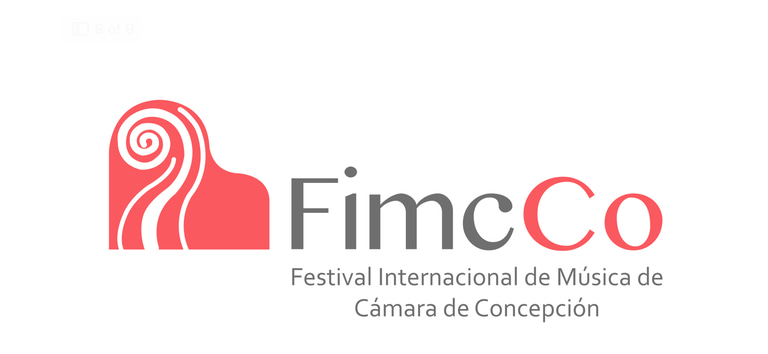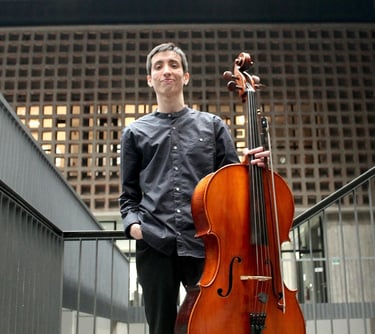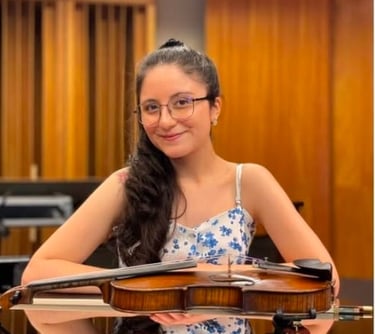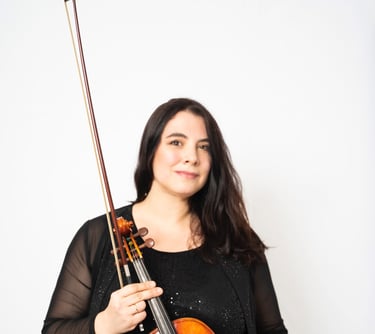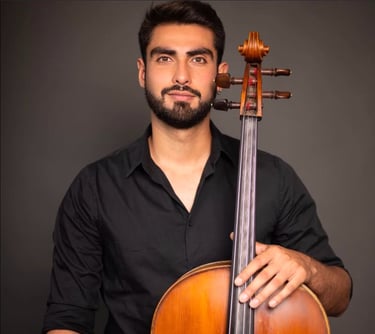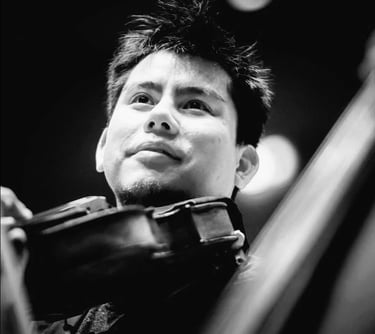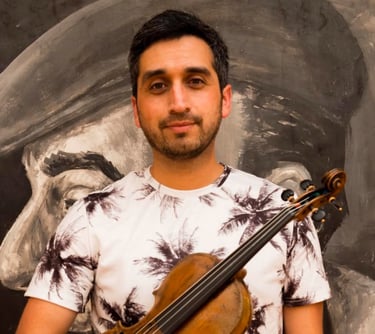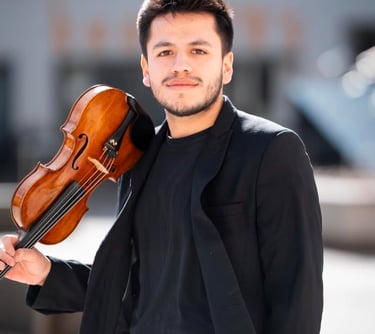Crescendo
Concert Program
Ludwig van Beethoven
Strin Trio in G Major Opus 9 No.1
I. Adagio - Allegro con brio
II. Adagio ma no tanto e cantabile
III. Scherzo. Allegro
IV. Presto
Igor Stravinsky
Three pieces for String Quartet**
Erwin Schulhoff
Five pieces for String Quartet **
I. Alla Valse Viennese. Allegro
II. Alla Serenata. Allegretto con moto
III. Alla Czeca. Molto allegro
IV. Alla Tango milonga. Andante
V. Alla Tarantella. Prestissimo con fuoco
Pause
Kelly-Marie Murphy
Dark Energy for String Quartet**
Ralph Vaughan Williams
Fantasy Quintet with two Violas
I. Prelude. Lento ma non troppo
II. Scherzo. Prestissimo
III. Alla Sarabanda: Lento
IV. Burlesca : Allegro moderato
**Premiere in Chile
About the Program
"Crescendo"
Chamber music is first and foremost a dialogue. In this programme, the concept of Crescendo is manifested not only in the musical dynamics, but also in the expansion of the ensemble on stage. Throughout the concert, the performers multiply, the textures become denser and the energy grows, revealing the expressive power of the interaction between the musicians.
The starting point is Ludwig van Beethoven's String Trio No. 1 in G major, Op. 9, a work in which the young composer already shows his ability to transform tradition. With a perfect balance between lyricism and vigour, the trio displays expressive contrasts in its four movements, with moments of delicate elegance and episodes of great intensity. This is the first step of our crescendo, with three musicians exploring the possibilities of their instruments to the full.
The next level introduces a fourth performer with two contrasting but complementary works: Three Pieces for String Quartet by Igor Stravinsky and Five Pieces for String Quartet by Erwin Schulhoff. Stravinsky, with his characteristic rhythmic and fragmented language, condenses in these miniatures a sonorous universe of precision and energy, with echoes of neoclassicism and Russian folk music. Schulhoff, for his part, in his Five Pieces, plays with dance forms in a succession of sarcastic, playful and even grotesque movements, reflecting his irreverent spirit and his fascination with modernity. Together, these works expand the chamber music language, adding layers of colour and texture to the development of the programme.
After the break, the intensity continues to build with Kelly-Marie Murphy's Dark Energy, a work for string quartet that explores the concept of ever-expanding energy. Inspired by the theory of dark energy in the universe, the piece is characterised by rhythmic momentum, extreme contrasts and a sense of unstoppable movement. Murphy uses the strings with fierce virtuosity, creating music that seems to grow and extend in multiple directions.
The programme culminates with the greatest instrumental expansion of the evening: Ralph Vaughan Williams' String Quintet in C minor, a work that incorporates a second viola, deepening the ensemble's harmonic richness and timbral warmth. Vaughan Williams, with his unmistakable lyrical language and his inspiration in the English tradition, transports us to a sound world of depth and nostalgia. Here, the crescendo is not only numerical, but also emotional, closing the programme with a work of great expressiveness and expansive lyricism.
From the intimacy of a trio to the fullness of a quintet, Crescendo is a journey through ever-evolving musical interaction, a testament to the power of the ensemble to transform, grow and resonate in space.
